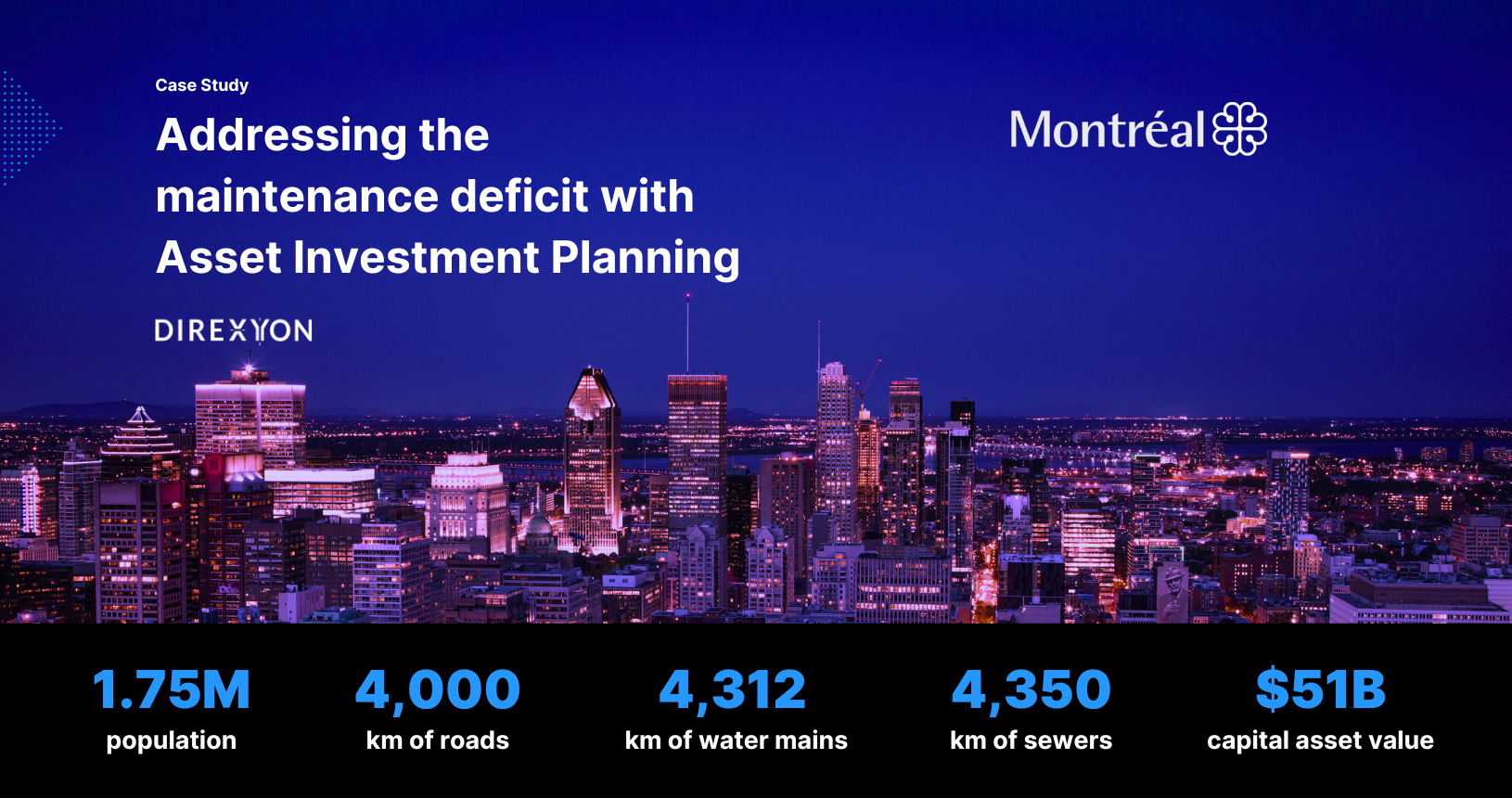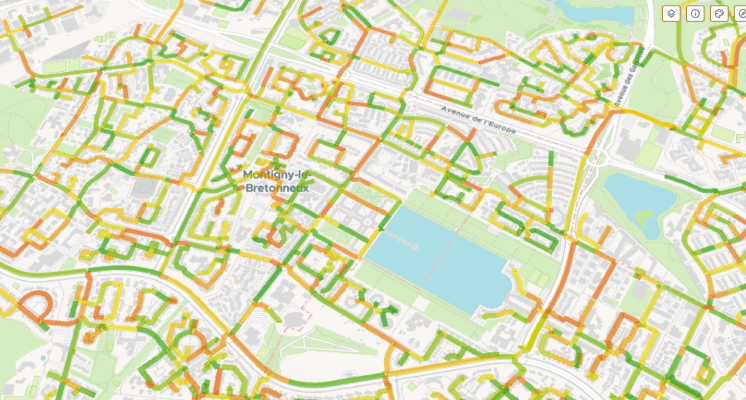
How to re-think asset investment planning in the context of aging P&U infrastructures?
August 30, 2021City of Montreal: an Asset Investment Planning success story

PROJECT SUMMARY
The City of Montreal faced a water infrastructure deficit exceeding $1.2 billion.
To meet its service level objectives, replacing the aging assets would require an investment of $10 billion over the next 20 years.
With an annual intervention budget of $216 million, city decision-makers leveraged Direxyon’s Asset Investment Planning suite to identify impactful and cost-effective interventions for enhancing the performance of its infrastructure assets in the short, medium, and long-term.
Objectives
The City of Montreal needed to prioritize its water infrastructure, with nearly 3,600 km of water main and sewer assets considered in urgent need of repair or replacement. Millions of litres of water were being lost to leaks daily, and the maintenance deficit was estimated to exceed $1.2 billion. To meet long-term service level objectives, the city’s asset managers forecasted that the city would need to invest over $10 billion over the next 20 years even though the department only had on average $216 million per year to invest in interventions.
Due to the budget constraints and condition of the assets, the City needed to rethink its intervention strategies.
Challenges
Siloed investment planning throughout the City of Montreal prevented the integration of intervention and maintenance plans across multiple asset types. This lack of coordination at the planning phase often led to both duplicate and overlooked investment opportunities, as well as negatively affecting the satisfaction of citizens.
The City’s asset managers were tasked with developing investment strategies that would simultaneously:
- Reduce the infrastructure deficit.
- Minimize construction-related inconveniences.
- Improve service levels.
- Optimize spending.

Solutions
By adoption Direxyon’s Asset Investment Planning solution, the City of Montreal was able to assess their road and water assets’ current condition, their degradation over time, their hierarchies, and their total cost of ownership.
Based on simulation results of possible investment strategies, the City discovered that prioritizing water infrastructure rehabilitations rather than replacement would achieve the desired results.
Synchronizing sewer and water main interventions with road work would also drive down costs and social disruptions.
Prioritizing rehabilitations based on the City’s risk tolerance ensured the strategy support service level objectives in the short, medium, and long term.

Results
Since 2010, the City of Montreal has rehabilitated nearly 500 miles of water infrastructure, which is more than the distance separating New York City and Detroit. On average, 37 to 40 miles of Montreal’s water infrastructure is rehabilitated every year.
Thanks to the improvements regarding its water infrastructure, the City of Montreal is adding linear assets, non-linear assets, and buildings to Direxyon’s AIP solution for a holistic view of the municipality’s long-term investments.
The City of Montreal uses Direxyon to:
- Prioritize interventions on critical segments based on risk tolerance, budget constraints, and asset interdependencies.
- Synchronize their maintenance strategies across asset types for enhanced efficiency.
- Reduce the annual investment required to meet its service level objectives by up to 50%.
- Reduce its annual water infrastructure break rate by 50%.
- Significantly reduce the infrastructure deficit on its road and water networks.
- Save more than $200 M per year in interventions.

Direxyon Suite Municipality Solutions
How Direxyon’s Asset Investment Planning suite helps municipalities plan for a sustainable future.

Map all your assets
Import all your asset data from any source, format, or vendor and visualize them on a map, by neighbourhood, by projects, costs, etc.

Compare your strategies
Simulate and compare asset intervention strategies to see their long-term viability based on cost, risk, performance, etc.

Create your investment plan
Select priority initiatives and plan your investments accordingly. Allocate resources to your entire municipal infrastructure portfolio: water, roads, buildings, transportation, etc.
Need help producing your Municipal Asset Management Plan?
Direxyon has extensive expertise with many municipalities planning the future of their infrastructure. Learn more: How can Canadian Municipalities Benefit from Asset Investment Planning?

Typical questions we help answer:
- How much is my maintenance deficit?
- What is the breakage rate of my assets?
- What is my ideal level of service?
Let's work together
Tell us about your strategic goals and we’ll be in touch with how we can help.

